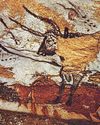
In June of 2020, the infamous Golden State Killer was finally brought to justice. From the late 1970s to the early 80s he had terrorised neighbourhoods in California, creeping into homes at night and robbing, raping, and often killing their occupants. Police had few leads, the trail went cold. Then in 2018 investigators put a sample of DNA found at one of the crime scenes into a genealogical database called GEDMatch. GEDMatch was not designed to find criminals, it was intended to help people find people they were related to. It worked by making connections between the DNA sequence data of its members. The user, by entering their DNA sequence into the website, would be given information on likely relatives who were also members, creating a possible family tree. When investigators put the Golden State Killer’s DNA into the database, the system offered up some close matches – possible distant relatives of the suspect. This material, painstakingly triangulated with previously known information, allowed investigators to narrow their focus down to one person, Joseph James D’Angelo, who by then was an old man of seventy-two years. The police had found their killer.
After three decades of evading capture, eluding brilliant investigators, D’Angelo was caught by the brute power of mass data and algorithms, and he never saw it coming. This merging of forensic science and genealogy has now become a massive success, kicking off the burgeoning field of ‘forensic genealogy’ and leading to the resolution of over sixty other cold cases.
Bu hikaye Philosophy Now dergisinin April/May 2022 sayısından alınmıştır.
Start your 7-day Magzter GOLD free trial to access thousands of curated premium stories, and 9,000+ magazines and newspapers.
Already a subscriber ? Giriş Yap
Bu hikaye Philosophy Now dergisinin April/May 2022 sayısından alınmıştır.
Start your 7-day Magzter GOLD free trial to access thousands of curated premium stories, and 9,000+ magazines and newspapers.
Already a subscriber? Giriş Yap

Metaphors & Creativity
Ignacio Gonzalez-Martinez has a flash of inspiration about the role metaphors play in creative thought.

Medieval Islam & the Nature of God
Musa Mumtaz meditates on two maverick medieval Muslim metaphysicians.

Robert Stern
talks with AmirAli Maleki about philosophy in general, and Kant and Hegel in particular.

Volney (1757-1820)
John P. Irish travels the path of a revolutionary mind.

IT'S A WONDERFUL LIFE
Becky Lee Meadows considers questions of guilt, innocence, and despair in this classic Christmas movie.

"I refute it thus"
Raymond Tallis kicks immaterialism into touch.

Cave Girl Principles
Larry Chan takes us back to the dawn of thought.

A God of Limited Power
Philip Goff grasps hold of the problem of evil and comes up with a novel solution.

A Critique of Pure Atheism
Andrew Likoudis questions the basis of some popular atheist arguments.

Exploring Atheism
Amrit Pathak gives us a run-down of the foundations of modern atheism.